Tips for writing a rollicking book that rhymes.
https://www.theguardian.com/childrens-books-site/2016/jul/01/how-to-write-rollicking-rhyming-stories-pip-jones-squishy-mcfluff
Viewing: Blog Posts Tagged with: Rhyme, Most Recent at Top [Help]
Results 1 - 25 of 69
Blog: Just the Facts, Ma'am (Login to Add to MyJacketFlap)
JacketFlap tags: rhyme, picture_books, Add a tag
Blog: (Login to Add to MyJacketFlap)
JacketFlap tags: Rhyming, Rhyme, Baby, Song, Bilingual, Tish Rabe, Kids Corner, Kid Lit Crafts & Activities, Kid Lit Songs, Add a tag

Author Tish Rabe does more than read her board book Love You, Hug You, Read to You, she sings it on Read Out Loud! Rabe is a trained opera singer who frequently sings with her family. Love You, Hug You, Read to You, is about a parent’s promise to always do three important things for their child; love them, hug them, and read to them. Each page includes questions a parent can ask a child to further engage them in the story. A bilingual version of the book (see below) is available too.
Like it? Pin It!

Watch Tish Rabe on StoryMakers!

ABOUT LOVE YOU, HUG YOU, READ TO YOU!
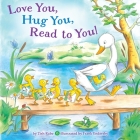
Written by Tish Rabe, illustrated by Frank Enderby
Published by Random House Books for Young Readers, Board Books
There are three things I’ll always do … love you, hug you, read to you. The simple promise of togetherness offered in this board book is enhanced by interactive prompts throughout, encouraging parents to engage with their child while reading. Studies show that asking questions, like the ones in this book, helps children learn to read faster than if they just listen to a story. Love and literacy are gifts we can give to our children every day Also available as bilingual (Spanish and English) edition entitled ¡Te amo, te abrazo, leo contigo!
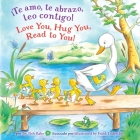
Written by Tish Rabe, illustrated by Frank Enderby
Published by Random House Books for Young Readers, Board Books
¡Te amo, te Abrazo, Leo Contigo!/Love You, Hug You, Read to You! is a bi-lingual book written in both Spanish and English. Studies have shown that asking children’s questions about what’s happening in a book helps them learn to read faster than if they just sit and listen to a story so this book features interactive questions in both languages. It also offers the opportunity for Spanish speakers to learn English and English speakers to learn Spanish!
ABOUT TISH RABE
Wish Rabe has written over 160 children’s books for Sesame Street, Disney, Blue’s Clues, Curious George, Huff and Puff and many others. In 1996 — five years after the death of Dr. Seuss — she was selected by Dr. Seuss Enterprises to create The Cat in the Hat’s Learning Library, a new line of rhyming science books for early readers. A television series based on these books, The Cat in the Hat Knows a Lot About That, airs daily on PBS Kids.
Ms. Rabe also wrote the popular Dr. Seuss book for parents-to-be Oh the Places You’ll Go to be read in Utero! and created her own character, The I Believe Bunny, which won a Mom’s Choice Award for Best Picture Book – Gold. She also wrote scripts for children’s television series including “Clifford”, “Clifford’s Puppy Days” and was the Head Writer for “I Spy!” for Scholastic Entertainment and HBO family.
In 1982, she traveled to China with Jim Henson’s Muppets to produce “Big Bird in China”, which won the Emmy for Best Children’s Special for NBC. Later that year, she became Senior Producer of a new science series for kids on PBS called “3-2-1 Contact”. During the five seasons of the show, Ms. Rabe wrote scripts as well as lyrics for songs including “What Does Your Garbage Say?”, “Electricity is the Power” and “People are Mammals Too”.
Read more, here.
CONNECT WITH TISH RABE
Website | Facebook | Twitter | YouTube
CONNECT WITH KidLit TV
Facebook Group | Facebook Page | Instagram | Newsletter | Pinterest | Twitter | YouTube
Read Out Loud
Executive Producer: Julie Gribble | Producer: Kassia Graham
Did you like this article? Leave a comment for us below.
We love to hear from YOU!
This post contains affiliate links.
All Rafflecopter entrants must reside in the United States and be at least 13 years old.
The post Read Out Loud | Love You, Hug You, Read to You! appeared first on KidLit.TV.
Blog: Just the Facts, Ma'am (Login to Add to MyJacketFlap)
JacketFlap tags: rhyme, Add a tag
It's easy to write poorly in rhyme, so make sure to avoid these mistakes.
https://li.st/l/6G5mNeBDX1faUIfJRdIscE
Blog: (Login to Add to MyJacketFlap)
JacketFlap tags: picture book, Rhyming, Fantasy, Rhyme, Kids Corner, Kid Lit Crafts & Activities, Add a tag

There Was an Old Dragon Who Swallowed a Knight is author Penny Parker Klostermann’s debut picture book. There Was an Old Dragon Who Swallowed a Knight is based on the children’s song “There Was an Old Lady Who Swallowed a Fly.” Penny’s tale follows a dragon who knows nothing of moderation or patience. However, thanks to the handiwork of Penny and illustrator Ben Mantle, the old dragon seems to know comedic timing. He swallows a noble night, a steed who runs at too fast a speed, and many other objects in the land — living or not. Something tells us this dragon is going to learn a lesson, today.
This episode of Read Out Loud was filmed during The Rhyming Picture Book Revolution Conference at KidLit TV HQ.
KidLit TV’s Read Out Loud series is perfect for parents, teachers, and librarians. Use these readings for nap time, story time, bedtime … anytime!
No matter how many swallowed-fly titles you own, this one belongs on your shelf too. — Kirkus Reviews
There Was an Old Dragon Who Swallowed a Knight
ABOUT THERE WAS AN OLD DRAGON WHO SWALLOWED A KNIGHT

by Penny Parker Klostermann, illustrated by Ben Mantle
Published by Random House
We all know that there was an old lady who swallowed lots of things. Now meet the old dragon who swallows pretty much an entire kingdom Will he ever learn a little moderation? This rollicking rhyme is full to bursting with sight gags, silly characters, and plenty of burps Parents and kids alike will delight in Ben Mantle’s precisely funny illustrations and in Penny Parker Klostermann’s wacky rhymes.
- Click here to download the There Was an Old Dragon Who Swallowed a Knight activity guide from Random House.
- Click here to download additional activities from Penny Parker Klostermann’s site!
CONNECT WITH PENNY PARKER KLOSTERMANN
Website | Facebook | Goodreads | Pinterest | Twitter
CONNECT WITH KidLit TV
Facebook Group | Facebook Page | Instagram | Newsletter | Pinterest | Twitter | YouTube
Read Out Loud
Executive Producer: Julie Gribble
Like it? Pin it!

This post contains affiliate links.
The post Read Out Loud | There Was an Old Dragon Who Swallowed a Knight appeared first on KidLit.TV.
Blog: (Login to Add to MyJacketFlap)
JacketFlap tags: Friendship, Rhyming, Seasons, Nature, Animals, Rhyme, Sharing, Activity, Teacher's Guide, STEAM, STEM, Read Out Loud, Kids Corner, Kid Lit Crafts & Activities, Add a tag

Bear Snores On is the first book in Karma Wilson’s series about Bear; a huggable and loyal friend, connoisseur of popcorn, and avid swimmer. It’s that time of the year and Bear has gone to sleep for a long time. What happens when several of his woodland friends happen upon his warm lair?
Bear Snores On is a great book you can use to teach young readers about seasons, hibernation, friendship, and sharing. There are so many big lessons in one small book!
Karma Wilson’s reading of Bear Snores On was filmed during Angie Karcher’s Rhyming Picture Book Revolution Conference (RPBC). The purpose of the RPBC is to educate and support authors who write rhyming picture books.
KidLit TV’s Read Out Loud series is perfect for parents, teachers, and librarians. Use these readings for nap time, story time, bedtime … anytime!
Parents and Educators: Click here to download free Bear Snores On activities!
Explore books written by Karma Wilson including more books about Bear!
ABOUT BEAR SNORES ON
Bear Snores On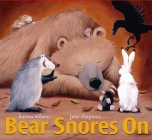
ABOUT KARMA WILSON
Via karmawilson.com
Karma Wilson grew up an only child of a single mother in the wilds of North Idaho. Way back then (just past the stone age and somewhat before the era of computers) there was no cable TV and if there would have been Karma could not have gotten it. TV reception was limited to 3 channels, of which one came in with some clarity. Karma did the only sensible thing a lonely little girl could do…she read or played outdoors.
Playing outdoors was fun, but reading was Karma’s “first love” and, by the age 11 she was devouring about a novel a day. She was even known to try to read while riding her bike down dirt roads, which she does not recommend as it is hazardous to the general well being of the bike, the rider, and more importantly the book. Her reading preference was fantasy (C.S. Lewis, Terry Brooks, etc…) and historical fiction (L.M. Montgomery, Laura Ingalls Wilder, etc…). Those preferences have not changed much.
Karma never considered writing as a profession because her mother was a professional writer which made it seem like boring and mundane work. At the age of 27 she realized that she still loved well written children’s books of all kinds, from picture books to young adult novels. By that time Karma was a wife and the mother of three young children. Trips to the library with her children were a combination of emotions…when they got a good book there was fun to be had by all, but so many of the books weren’t what her children wanted to listen to.
Read more about Karma, here.
CONNECT WITH KARMA WILSON
Website
Facebook
Goodreads
Twitter
ABOUT JANE CHAPMAN
Jane Chapman writes and illustrates children’s books. Her work is published under her real name, and Jack Tickle; her pseudonym.
CONNECT WITH JANE CHAPMAN
Website
Facebook
Twitter
CONNECT WITH KidLit TV
Facebook Page
Facebook Group
Instagram
Newsletter
Pinterest
Twitter
YouTube
Read Out Loud
Executive Producer: Julie Gribble
Like it? Pin it!
The post Read Out Loud | Bear Snores On appeared first on KidLit.TV.
Blog: Just the Facts, Ma'am (Login to Add to MyJacketFlap)
JacketFlap tags: rhyme, picture_books, Add a tag
How not to write a picture book in rhyme.
http://picturebookden.blogspot.com/2012/03/how-not-to-write-rhyming-picture-book.html
Blog: 4EYESBOOKS (Login to Add to MyJacketFlap)
JacketFlap tags: Children, blog, Family, poetry, illustrated, winter, writing, parenting, rhyme, children's picture books, fox, book reviewers, Atlanta author, The Fox and the Snowman, Add a tag
We have just completed the final edits on our new winter story told in verse. We are now beginning the illustration process. We are so excited about this next story and can’t wait to hear your feedback. Here’s a few hints about what our next story will be about. Aren’t they just beautiful? What other animal reminds you of winter?
Blog: Perpetually Adolescent (Login to Add to MyJacketFlap)
JacketFlap tags: Book News, poem, rhyme, song, Walker Books, Jackie Hosking, Janeen Brian, roland harvey, New Book Releases, Cheryll Johns, Scholastic Australia, Omnibus Books, Claire Richards, Colin Buchanan, Laura Wood, Marjorie Crosby-Fairall, Book Reviews - Childrens and Young Adult, Tony Wilson, Ed Allen, Book Reviews - Poetry, The Croc and the Platypus, Romi Sharp, 10 Clumsy Emus, 10 Cheeky Possums, 10 Spooky Bats, Little Barry Bilby had a Fly upon his Nose, Silly Squid! Poems about the Sea, The Cow Tripped Over the Moon, Add a tag
Children connect with songs and rhymes. This innate quality allows young readers and listeners the ability to play and experiment with sounds with ease. Not only do these lyrical stories lend themselves to a range of engaging and interactive experiences, but their audience is also given opportunities to learn the mechanics of language, sequences and […]
Add a CommentBlog: Teaching Authors (Login to Add to MyJacketFlap)
JacketFlap tags: class, Book Giveaway, rhyme, Paul Janeczko, Paul B. Janeczko, April Halprin Wayland, poetry exercise, Wednesday Writing Workout, chris rashchka, Add a tag
.
Howdy, Campers!
Lucky you--you arrived just in time for another episode in TeachingAuthor's 5-Star series,
Okie dokie--welcome back, PBJ! Would you elaborate on the writing exercise you talked briefly about last Friday?
What I said last Friday was that it was more an approach than an exercise. I like to use poetry models when I work with young readers. I try to show them poems by published poets, but also poems by their peers. When you’re in the 4th grade, Emily Dickinson or Robert Frost may not impress you, but reading a poem by another 4th grader may be just the motivation that you need. And before I turn the kids loose to write, we read the poem, and I give them the chance to talk about what they notice in it. Then we do something a group rough draft so they can begin to see the writing process in action. Then it’s time for them to write.
One of the poems I use is based an an English street poem called “I’d Rather Be.” Here are a few lines:
I’d rather be hands than feet.
I’d rather be honest than cheat.
I’d rather be a bed that a seat.
I’d rather be a blanket than a sheet.
- I give the kids a copy of this poem, which runs about 20 lines.
- I break it into 3 parts and have a different student read each part. (Part of every workshop is reading aloud!)
- I then ask the students if they detected any pattern in the poem. Rhyming poems generally follow a pattern.
- The kids can identify 3 ingredients of the pattern: end rhyme, repetition of “I’d rather be” at the start of each line, a comparison or opposite in each line.
- Taken together, these 3 ingredients give the 4 part of that pattern: rhythm.
- Before I turn the kids loose to write 3-4 lines of their own “I’d Rather Be,” we try to create an example of 4 lines out loud. The kids are usually quick to get the hang of it.
- Just to make sure, we try another 4 lines with a different end sound.
- Then they are ready to read.
- After 10-15 minutes of writing, it’s time to read examples aloud. Usually, there are many takers.
The kids write stuff like this:
I’d rather be wood than concrete
I’d rather be huge that petite
I’d rather be gloves than a hat
I’d rather be a ball than a bat
I’d rather be hands than toes
I’d rather be a finger than a nose
I’d rather be love than hate
I’d rather be alone than a mate
Sounds like an exercise that I can take directly to the classroom--and one that packs a lot of punch, Paul. Thanks again for dropping by! (AND surely that English street song is the origin of Paul Simon's El Condor Pasa (If I Could)...)
A book-eating moth in the early Middle Ages. A peach blossom during the Renaissance. A haunted palace in the Victorian era. A lament for the hat in contemporary times...In The Death of the Hat: A Brief History of Poetry in 50 Objects, award-winning anthologist Paul B. Janeczko presents his fiftieth book, offering young readers a quick tour of poets through the ages. Breathing bright life into each selection is Chris Raschka’s witty, imaginative art.
Blog: my juicy little universe (Login to Add to MyJacketFlap)
JacketFlap tags: revision, rhyme, meter, novelty, my own work, Add a tag
I'm just ruminating over my last three poems, where I got going on a set of Spoon, Knife and Fork. Atypically for me, all three are rhymed, similarly metered, and all share a basic 4-line stanza. I could keep going like this for a while, I guess, picking kitchen items and writing each its little ditty (see all the "Deeper Wisdom" poems featured at Today's Little Ditty, of which "What Does the Knife Know?" is one).
But would that make a readable collection, a saleable collection? When I started typing this, I was planning for the answer to be "NO; that would be a little boring and samey and in a way unchallenging for both writer and reader," and then I was going to contrast that with any collection of "traditional" haiku, which would be therefore by its very nature boring and samey and unchallenging, and then I was going to wonder why haiku collections don't seem that way.
And then as I entered that second paragraph, I got walloped upside the head by Jack on one side and Shel on the other, and A.A. Milne appeared to wag his clever ghostly finger in my face, reminding me how many, many classic poems and entire volumes of poetry for children are rhymed and metered and kind of about the same things (although not usually kitchen items).
Now I'm wondering what it is that makes me want a new shape, a new rhythm, a new challenge each time I begin a poem. I never cook the same recipe or meal the same way twice, and at school I'm forever devising new greetings, new center activities, new routines (and creating a lot of work for myself). While I craved novelty as a kid, I understand that for many students, sticking with one thing for longer is what's needed for competent mastery, and that too much "new" can be stressful.
Well, it seems that in the spirit of my OLW for 2015, I'm revising my 2nd-paragraph thinking. I still think it's important for young writers to learn that poetry is not all rhythm and rhyme, and that for most beginning writers those things are hard to pull off and probably best avoided. But golly, when 2/3 of a class of kindergarteners need to be TAUGHT to hear rhyme instead of having grown it into their bodies, and in the knowledge that I am not a beginning writer myself and quite enjoy the challenge of hewing to a rhymed and metered form, perhaps Spoon, Knife and Fork are suggesting a less varied--but no less tasty--diet of poetry for now.
Heidi Heidi
Mordhorst Mordhorst:
As teacher and poet she
Took great
Care to seek freedom,
Craving the novelty.
Heidi Heidi
Said to herself,
"Self," she said, said she:
"You must never get stuck at the end of the town
called Free-Verse Poetry."
HM 2015
all rights reserved
Today's Little Roundup is with Paul at These 4 Corners. Hope to see you there!
Blog: my juicy little universe (Login to Add to MyJacketFlap)
JacketFlap tags: my own work, kitchen poems, rhyme, Add a tag
Tine After Tine
tuning fork for matching pitch
long-handled fork to scratch an itch
fork in the road to force a decision
(fork not as good as knife for incision)
garden fork for hard-packed soil
forklift spares your back the toil
bicycle fork suspends your wheels
favorite fork: the one at meals
HM 2015
all rights reserved
Blog: Frog On A Blog: The Blog Of Children's Picture Book Author Lauri Fortino and Her Friend Finley (Login to Add to MyJacketFlap)
JacketFlap tags: children's picture books, publishing industry, Welcome to my blog!, Support Literacy, children's books, story books, picture books, children's stories, rhyme, Add a tag
 Kids love stories about pirates. Kids also love to laugh. What’s funnier than a pirate who gets seasick? Wouldn’t your child want to read a story like that? That is exactly what children’s author Fran Sivers and illustrator Leilani Coughlan have created in their book Pelican Bill. But they need our help. They’ve begun a KickStarter campaign in order to raise the necessary funds they need to bring Pelican Bill and his pirate crew to life in a children’s picture book. Please go to their KickStarter page, https://www.kickstarter.com/projects/1163027881/pelican-bill-a-sickeningly-good-yarn, watch the short video clip, read about the project (you can even read the entire rollicking, rhyming, jolly good story), and consider supporting their campaign. If you cannot help financially, at least spread the word about this really great cause. I’m sure Fran and Leilani will appreciate any assistance you can give.
Kids love stories about pirates. Kids also love to laugh. What’s funnier than a pirate who gets seasick? Wouldn’t your child want to read a story like that? That is exactly what children’s author Fran Sivers and illustrator Leilani Coughlan have created in their book Pelican Bill. But they need our help. They’ve begun a KickStarter campaign in order to raise the necessary funds they need to bring Pelican Bill and his pirate crew to life in a children’s picture book. Please go to their KickStarter page, https://www.kickstarter.com/projects/1163027881/pelican-bill-a-sickeningly-good-yarn, watch the short video clip, read about the project (you can even read the entire rollicking, rhyming, jolly good story), and consider supporting their campaign. If you cannot help financially, at least spread the word about this really great cause. I’m sure Fran and Leilani will appreciate any assistance you can give.
Blog: Just the Facts, Ma'am (Login to Add to MyJacketFlap)
JacketFlap tags: nonfiction, rhyme, Add a tag
Sometimes a poem is just what you need for your nonfiction topic.
http://www.teachingauthors.com/2014/03/www-rhyme-nf.html
Blog: Teaching Authors (Login to Add to MyJacketFlap)
JacketFlap tags: Nonfiction, rhyme, Laura Purdie Salas, Wednesday Writing Workout, Water Can Be..., Add a tag

Kids (and grown-ups) love to write in rhyme, but it’s a lot harder than it looks. And it gets even tougher if you’re trying to write nonfiction in rhyme! So, here's an exercise for those interested in writing rhyming picture books. This could also be a fun classroom activity where you ask students to synthesize information learned in a particular math or science or history unit. (I wouldn’t even attempt something like this with students younger than 5th grade, though, and even then, working as a group will be a lot more successful.)
1. Pick a topic you want to write a short poem about. I think I’ll do, um, fences. Yup, fences. Pick something you’ve never written about and don’t actually want to write a whole poem or picture book about. That will make this less stressful!
2. Define your topic in a first line. That’s a place to start. m-w.com tells me a fence is “a structure like a wall built outdoors usually of wood or metal that separates two areas or prevents people or animals from entering or leaving.” OK, I’m going to start with:
A fence is like an outside wall
Because it ends in wall (and, yes, I purposely picked a simplish word that I know will have rhyming possibilities to end the line with), I’m going to brainstorm and/or look up on rhymezone.com words that rhyme with wall that might in some way work into this poem: all, ball, crawl, fall, tall,
3. Add detail in rhyming line.
A fence is like an outside wall:
Wood or metal, short or tall.
4. Decide what else you want to tell about your topic. I like the idea that fences sometimes keep people or things or animals IN, and sometimes keep people or things or animals OUT. So that’s what I want my second half of this poem to convey. In and out are the main elements of that concept, so I’ll check out some rhyme possibilities and see where that leads me:
in – bin, grin, skin, twin, win
out – about, doubt, shout, trout
Well, those lead me pretty much nowhere, at least at first glance. Maybe I’ll try inside and outside, instead:
cried, died, tried, wide
Again, a big, fat nothing.
So, I switch gears. WHAT does it keep inside? Kids and dogs is what I’m mainly thinking of. And what does it keep outside? Strangers, people that might get hurt on whatever’s inside the fence...
While, I was thinking about that, the word divide popped into my head, which would rhyme with inside or outside. So I’m going to play with that.
5. Now try another couplet to show your concept.
A fence’s job is to divide.
A fence keeps beagles safe inside.
I don’t like that because it’s not clear. And the two lines don’t really connect. No cause or effect. Each line is true, but there’s no relationship between them. I’ll try again.
I think that second concept is too big for two short lines. I’m going to simplify to the concept that a fence keeps animals safe.
A fenced-in pasture, green and wide,
keeps grazing cattle safe inside.
6. Read over the four lines you wrote. Congratulations!
A fence is like an outside wall:
Wood or metal, short or tall.
A fenced-in pasture, green and wide,
keeps grazing cattle safe inside.
OK, mine is not going to win any prizes, but it’s a start! I have a basic definition, a bit of detail, and then a single example of one kind of fence and its job. In reading it, I see some possibilities for re-ordering and revising lines. So my second draft is:
Wood or metal, short or tall,
a fence becomes an outside wall.
Rolling meadow, green and wide,
cattle safely fenced inside.
Again, this is just very basic. But doing this exercise can help you build some rhyming/meaning muscles, so it's a great practice activity for any would-be rhymers!
Here are a couple of bits from my first draft of A River Can Be…, which eventually turned into Water Can Be…. You can see this process at work here. It’s just a combination of picking a word I KNOW works for the topic, brainstorming rhymes, and then trying out lines with those other rhymes to see which ones work both for rhyme AND for topic.
And when a word didn’t have enough rhymes to play with (like haven), I tried a synonym that was more rhyme-friendly. I hope you have fun trying your hand at a little bit of rhyme today!
I'd love to see what you come up with! Feel free to share your four lines in the Comments!
Oh! And don't forget to enter our book giveaway of Water Can Be...! by clicking on the Rafflecopter widget in last Monday's post.
--Laura Purdie Salas
Blog: Just the Facts, Ma'am (Login to Add to MyJacketFlap)
JacketFlap tags: rhyme, picture_books, Add a tag
The first annual rhyming picture book month opens for registration of March 16, 2014.
http://angiekarcher.wordpress.com/rhypibomo-countdown/
Blog: Frog On A Blog: The Blog Of Children's Picture Book Author Lauri Fortino and Her Friend Finley (Login to Add to MyJacketFlap)
JacketFlap tags: Picture book authors, children's book authors, Book review, rhyme, children's picture books, Picture book illustrators and illustrations, Add a tag

Title: Friendly Day
Author: Mij Kelly
Illustrator: Charles Fuge
Publisher/Year: Barron’s/2013
Love it! That was my first thought after reading Friendly Day, a colorful, rhyming picture book that will make you feel all warm and fuzzy inside. I really like books that are happy and make me smile. Friendly Day is all about friendliness…and kindness. I’ve discovered that kindness is a theme I often incorporate into my own writing. I believe children can never read enough books about treating others with kindness, respect, and, of course, friendliness. Still, as all the experts say, you don’t want to preach in a picture book, you want to teach kids in a way that doesn’t feel like teaching, but rather entertains. And Friendly Day does just that with its joyous, frolicking rhyme that rolls off the tongue, and bold, bright, super-fun illustrations of animals interacting with one another. I’ve just got to share the wonderful opening verse:
When Cat caught Mouse, outside his house,
courageous Mouse cried, “Hey!
Put down that plate and see the date.
It’s Friendly Day today
-a day for sharing, a day for caring,
when everyone is nice,
when Frog reads Snail a fairy tale
and cats do NOT eat mice.”
This book makes me wish there really was a Friendly Day!
But maybe every day can be Friendly Day…that’s even better. ![]()
Blog: sketched out (Login to Add to MyJacketFlap)
JacketFlap tags: illustration, illustration friday, drawing, humor, voice, cartoon, poem, sketch, children's illustration, rhyme, sketchbook, sketching, singer, Add a tag
The Illustration Friday word of the week is “voice.” So I decided to redraw yet another oldie. I better get off my duff and come up with some new ideas I suppose, eh?
Blog: Frog On A Blog: The Blog Of Children's Picture Book Author Lauri Fortino and Her Friend Finley (Login to Add to MyJacketFlap)
JacketFlap tags: Christmas, rhyme, children's picture books, Picture book illustrators and illustrations, Picture book authors, children's book authors, Add a tag

Title: A Wish To Be A Christmas Tree
Author: Colleen Monroe
Illustrator: Michael Glenn Monroe
Publisher/Year: Sleeping Bear Press/2000
A Wish To Be A Christmas Tree is a gorgeously illustrated holiday picture book told in flawless rhyme. It is sweet, magical, and heartwarming. The story is about a sad evergreen tree that has watched year after year as the trees around him are chosen to be Christmas trees. He knows it’s too late for him because he has grown too big and tall. He is heartbroken because being a Christmas tree has always been his dream. In order to cheer him, the woodland creatures find a way to show him just how much he is appreciated. This book is just beautiful in so many ways. First, look at the wonderful cover image above. From the sparkling snow, to the glowing background, to the character in the tree’s face, this picture makes you want to open the book to see more. Even the title is in the shape of a tree. And if you open the book, you won’t be disappointed. My favorite illustration depicts songbirds perched in the tree’s branches. The picture accompanies wonderful text such as this: “The first morning sun brought a wondrous sight, as icicles glimmered and captured the light. Colorful birds perched all over the pine, as beautiful as bulbs and just as fine.” Love it! Besides being visually stunning and a joy to read, the story conveys a message of friendship and caring. A Wish To Be A Christmas Tree is a must read!
Blog: sketched out (Login to Add to MyJacketFlap)
JacketFlap tags: illustration, drawing, humor, sketch, children's illustration, rhyme, sheep, sketchbook, sketching, insomnia, pun, animal idioms, lamb, idiom, counting sheep, SkADaMo (sketch a day month), SkADaMo, Sketch a Day Month, SkADaMo 2013, counting peeps, Add a tag
…………………………………………………………………………………………………………………..
So, I seem to be continuing on a bedtime theme here. It’s wishful thinking, no doubt. This chilly weather puts me in a mood to kick off my cloven sheep slippers and curl up in bed with a good book.
Ah, but I have sketches to catch up on! Missed another two days. Oh for shame! But wait, that’s right, there are no rules. No harm done!
Anyhoo, stop on over here and let’s see how the other SkADaMo participants have been doing.
Blog: Just the Facts, Ma'am (Login to Add to MyJacketFlap)
JacketFlap tags: rhyme, picture_books, Add a tag
Here are some ways to avoid having a sing-songy rhyming book.
http://themetermaids.blogspot.com/2013/08/throw-these-tricks-in-mix.html
Blog: Topsy Turvy Land - Donna J. Shepherd (Login to Add to MyJacketFlap)
JacketFlap tags: children, tips, health, Picture Book, rhyming, book, rhyme, Kevin Scott Collier, trailer, donna j. shepherd, Skincare, Sunburn, Ouch, prevention, Guardian Angel, sunscreen, sun safety, Add a tag
OUCH! SUNBURN!by Donna J. Shepherd A Wings of Faith Children's Book Author: Donna J. Shepherd Illustrations: Kevin Scott Collier ISBN: 1-933090-60-X ISBN 13: 9781933090603 Scroll down to see a video! From the Publisher: Donna J. Shepherd’s snappy rhymes along with the 15 colorful and fun illustrations by Kevin Scott Collier help children see the need to protect their skin in
Blog: Just the Facts, Ma'am (Login to Add to MyJacketFlap)
JacketFlap tags: poetry, rhyme, verse, Add a tag
Ten reasons poems don't need to rhyme.
http://www.kenneymyers.com/blog/10-reasons-poems-dont-always-need-to-rhyme/
Blog: Just the Facts, Ma'am (Login to Add to MyJacketFlap)
JacketFlap tags: rhyme, meter, picture_books, Add a tag
The Rhymeweaver website contains loads of information for writing a rhyming picture book.
http://www.writingrhymeandmeter.com/
Blog: Teaching Authors (Login to Add to MyJacketFlap)
JacketFlap tags: Book Giveaway, rhyme, writing rules, Jill Esbaum, Add a tag
Back in October, I posted about the three elements – rhythm, rhyme, and story – that have to work together in character-driven rhyming picture books. In that post, I addressed getting a story's rhythm exactly right.
That leaves rhyme and story, so I thought I'd get back to those today. You all know how to rhyme, so I won't waste an entire post on the topic. Two things to keep in mind, though:
- Use proper syntax. If you have to twist a line for the sake of the end rhyme, find another way to get the thought across. Lines should read the way a person normally speaks.
- Talk "up" to your readers. Don't shy away from complicated words now and then if they fit the story, if kids will be able to glean meaning from context (and, most likely, an illustration), and especially if they're fun to say. In my Ste-e-e-e-eamboat A-Comin'!, which takes place in the 1800s, I rhymed songs and shouts with roustabouts; silk cravats with cowboy hats; and coffee, spoons with brass spittoons.
Rhyming stories have been my favorites since I was 5 or 6 years old (and was introduced to Horton).
Of the 16 books I've sold so far, 6 are rhyming picture books. So these days, I critique a lot of rhyming manuscripts – as a volunteer judge at Rate Your Story, in private and conference crits, and in summer workshops (note: my pb workshop is Aug. 2-4 this year). The number one problem with the stories I see is . . . well, the stories. It's pefectly natural. We get so caught up in perfecting rhythm and rhyme that story takes a backseat. Because boy, once we get those rhyming lines working together, most of us would rather undergo a root canal than make changes.
But the same rules apply to a rhyming story to one written in prose. So, a checklist:
- Does my main character have a goal to reach or some kind of problem? Did I get to it right away? Does he solve it himself?
- Do things go WRONG?
- Did I include believable/necessary dialogue? (Yes, this is tougher to do in rhyming stories. You thought this would be easy?)
- Does every word of every line move the story forward and convey a precise meaning? This is a biggie. Go through your story line by line. Are any lines/stanzas merely restating in a different way information already given? Condense or cut.
- Have I used specific verbs, vivid language, fresh similes and metaphors, alliteration, onomatopoeia? (If you have fun, your reader will, too.)
- Is my word count as low as possible? (Little pitchers have big ears, yes, but they also have short attention spans.)
- Is my POV consistent? (Try to avoid 1st person in rhyming stories. It can be done, but it's extremely tough to do without sounding overly-contrived.)
- Has my MC shown growth or changed somehow by the end of the story? (And am I not hitting the reader over the head with it?)
When it comes to crafting rhyming stories, practice really does make perfect. Examine a variety of published rhyming picture books. To get a feel for meter, read them aloud. Type them out. Study their plot structure. Learn to recognize and correct problem areas in your own work.
One final tip that gets its own line and bold print:
- Embrace revision. (Because, truly, there's NEVER only one way to say something.)
And before you know it, you'll be on the track to publication. Note that I didn't call it a "fast track." This IS publishing.
Jill Esbaum
P.S. Remember to enter our book giveaway for a chance to win Tamera Wissinger's delightful Gone Fishing!
Blog: WORDS (Login to Add to MyJacketFlap)
JacketFlap tags: rhyme, writing for children, rhythm, book blog tour, book launch, Park Road Books, jazzy picture books, my cold plum lemon pie bluesy mood, Tameka Brown, picture books, Add a tag
I am excited to be part of the blog tour for Tameka Brown’s newest picture book — My Cold Plum Lemon Pie Bluesy Mood! Welcome, Tameka! *and the crowd goes wild!* Tameka graciously answered some of my questions below. I hope you are as inspired by her responses as I am. Her interview made me want to go …![]()
View Next 25 Posts






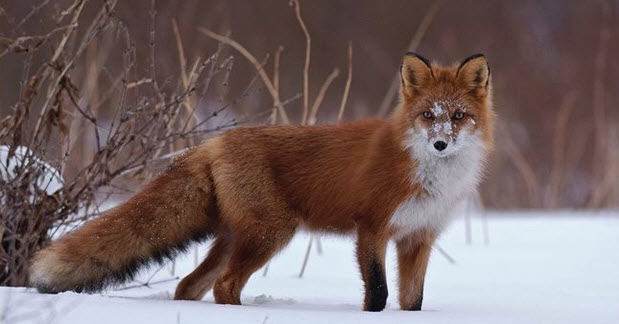






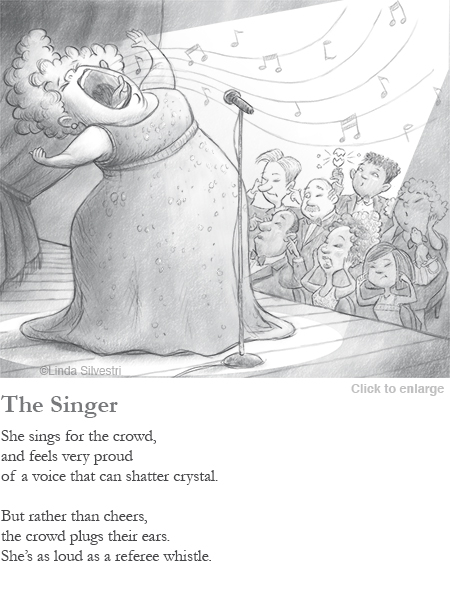
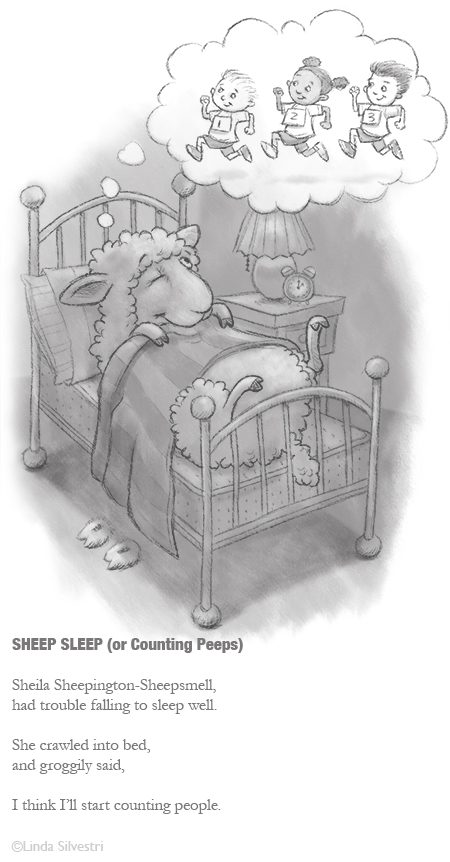

Great job, Penny! :D
This is excellent, Penny, and the kidlit group! I can’t wait to show this to my students as well!
Loved it. Great job Penny!
This is awesome! It is so cool to see and hear Penny in action!